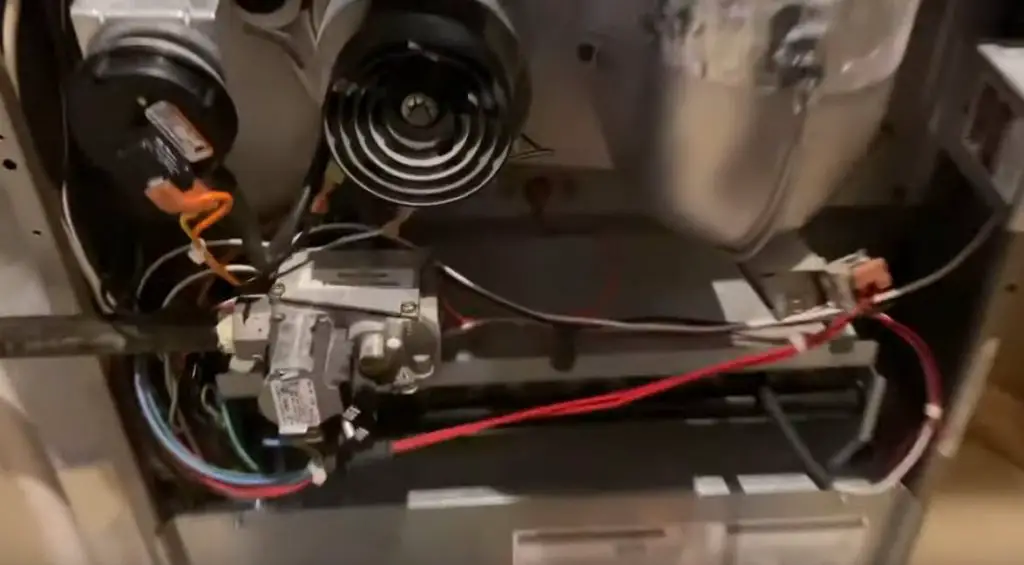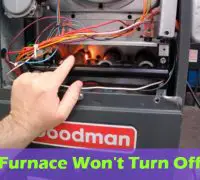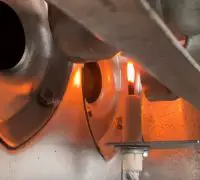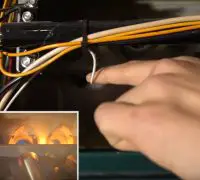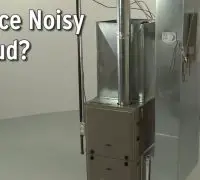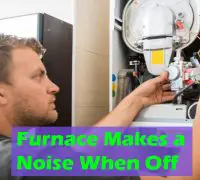If your furnace operates as it should, it will turn on and remain on until the desired temperature is reached. Once the goal is achieved, the furnace will turn off, and the house will maintain the desired temperature. It will take some time until the temperature decreases and the furnace operates again.
However, it’s short cycling when the furnace runs, shuts off, and starts again. It’s not able to create the desired temperature inside the house. Therefore, it will turn off and on over and over again. The house will feel cold even if the furnace runs almost all the time. Apart from the discomfort, you will soon see higher energy bills, and your furnace will wear out (from intense work) long before its time.
Page Table of Contents
Why does the furnace shuts off and starts again immediately?
Short cycling isn’t a problem that will go away on its own, but it’s one that you need to address the moment it appears. It can generate dreadful waste of energy, leave your house cold, and the HVAC components can suffer severe damage. Take fast action once the furnace starts to short cycle. The solution depends on the cause. Below you will find the most common reasons why the furnace performs absurdly.
The furnace is overheated
HVAC systems come with protection against various types of damage. It can overheat even if the furnace is created to heat a house. When the furnace identifies a risky heat level, it will turn off. It reduces the risk of damage, such as a cracked heat exchanger. If the heat exchanger does break, the carbon monoxide cat gets inside your house. It’s a lethal gas, so it’s excellent that the furnace turns off itself.
Overheating can occur due to reduced airflow, which a blocked exhaust vent or a dirty air filter can generate.
The HVAC air filter is dirty
A dirty air filter for the furnace is a common cause of its short cycling. If a defective flame sensor can make the furnace shut off immediately, a dirty air filter will let the furnace operate for several minutes before shutting it down. If you look, you can see how the air pushed out of the heat grates is hotter than usual.
When the dirt clogs the air filter, air won’t be able to circulate back into the furnace for cooling. As a result, heat will build to a level that is difficult to manage. The furnace will turn itself down as a safety precaution. You can wash the filter after you clean it. However, if it’s a disposable filter, you can buy a new one and replace the air filter.
The flame sensor is defective
When the flame sensor is defective and doesn’t work anymore, it will shut down immediately after it lights. We remind you that the sensor exists to supervise the gas valve. The safety mechanism is made to stop raw gas from getting inside the house. Whenever the flame is out, it will shut off the valve.
If the sensor doesn’t operate correctly, it will turn off the valve even if necessary. Cleaning the sensor is one solution; might the sensor might need replacing. Replacing the flame sensor is a job better left to the professionals.
One or several heat grates are blocked
The furnace must warm air up and push it through the heat grates. When hot air cannot flow freely from the heat grates, it will get trapped inside until the furnace overheats. Unless the problem is solved, the furnace will turn on and off. The grates come with dampers (control mechanisms) that people can use to let the heat inside or keep it outside of a room. It’s an efficient way to save energy. However, overheating will occur when too many grates are closed at one time. You should have 75% of the dampers open at all times.
The thermostat’s location is poor
Thermostats feature sensors that detect the temperature inside the house. A thermostat is created to monitor the furnace’s activity based on what it detects inside the house. However, if it’s not in the proper location, the thermostat won’t be able to do its job correctly. For instance, the sensor’s readings will be off when placed near a heat grate, window or other spot with secondary heat. The thermostat will think that the house is already hot and shut down the furnace consequently.
Make sure you set up the thermostat in a neutral location, away from anything that might impact its capacity to detect the indoor temperature accurately.
There’s a blockage in the exhaust vent
The exhaust vent should always be open. Snow, vegetation, nests, beehives, and similar things can block the vents. Such obstruction has to be removed as soon as possible. As a matter of fact, you should make a routine of cleaning the exhaust vent regularly. An open exhaust vent can be challenging, especially if animals reach and block it. If this happens, you shouldn’t risk solving the problem alone but ask for help from professionals.
The furnace is too big for your house
When you buy a home system, you might think that bigger is always better. However, that’s not the case with the furnace, as the excess capacity for a furnace can cause short cycling. The furnace components will wear out unnecessarily, the temperature will swing throughout the house, and the energy bills will increase for nothing.
The best thing to avoid such a situation is to buy a furnace according to your house’s size. For precise furnace size calculations, we recommend you contact a specialized HVAC contractor.
There are air leaks
Poor insulation in your house can also repeatedly make the furnace turn on and off. Before you look for the deep underlying cause of the furnace’s short cycling, you need to check out the windows. Some could be open or improperly sealed. When air passes the seals, the recently heated air from the furnace will escape through the window. As a result, the furnace won’t be able to heat the house and will begin to short cycle.
We recommend you caulk around the window frames, so that warm air stays trapped inside. Should the furnace start short cycling again, you need to look farther.
Before you go away
To decide that your furnace has a short cycling problem, you must know how a normal cycling process takes place. If the furnace operates properly, the heating process is relatively straightforward. You set the thermostat to the desired temperature. The thermostat will inform the furnace and light the burners with the fuel. The fuel will combust into hot air and the blower fan will push the hot air through the ducts and spread it throughout the house.
A normal cycling process takes around 15 minutes per cycle to warm your house. The cycle will repeat until your home achieves the desired temperature.
